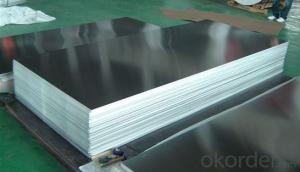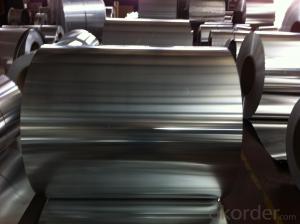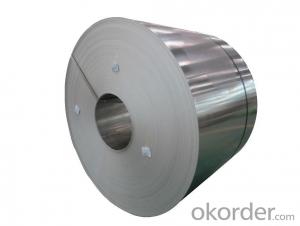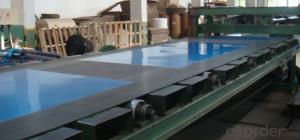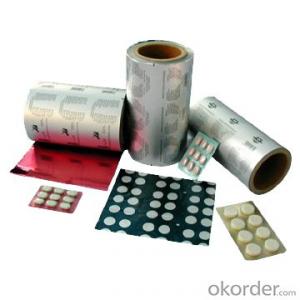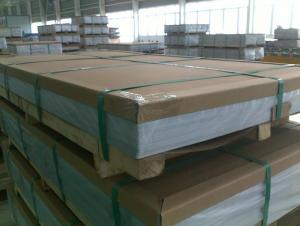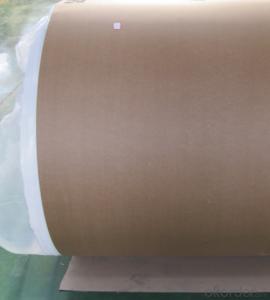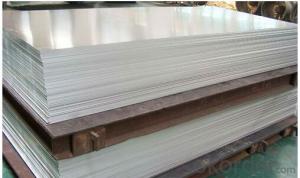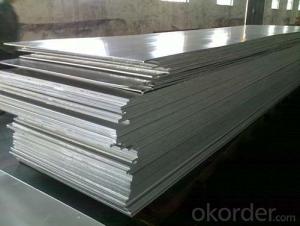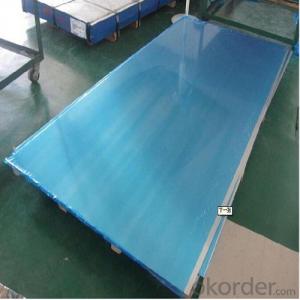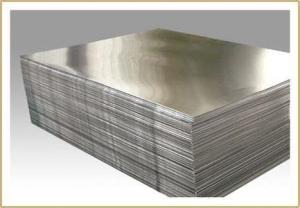5083 Aluminum Sheets for Sale - Aluminium Cold Rolled Sheet and Alloy Aluminium Slabs
- Loading Port:
- Shanghai
- Payment Terms:
- TT or LC
- Min Order Qty:
- 5 m.t.
- Supply Capability:
- 6000 m.t./month
OKorder Service Pledge
OKorder Financial Service
You Might Also Like
1.Structure of Product Description
Cold rolled aluminum sheet, cold drawn aluminum sheet, hot rolled aluminum sheet, are all widely used in the field of decoration field, etc.
The detailed grade are as follows: 1010, 1050,1060,1100, 2024, 3003, 3005, 3105, 5052,5754,5083,6061,6063,8011, etc.
The temper is include H14, H22, H24, H44,H112,H114,etc.
2. Main features of the product
a.Competitive price
b.Frist-Class Service.
c. Shortest service.
3. Image.
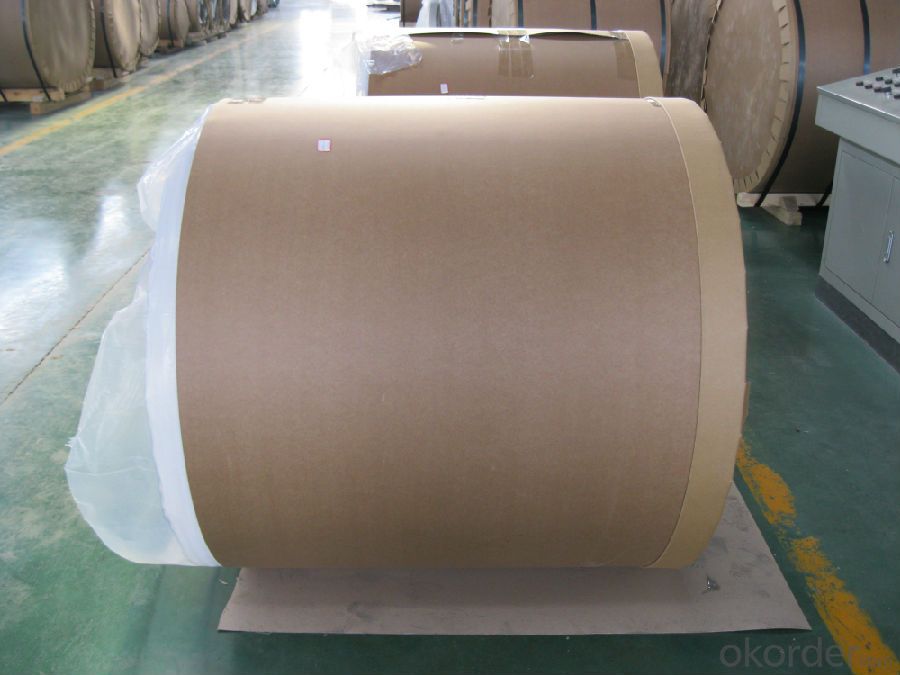
4. Product detailed sizes:
1000mm*2000mm, 1219mm*2438mm,1220mm*2440mm, 1250mm*2500mm,1500mm*3000mm, etc.
5. FAQ:
What is the quality standard?
---Usually our standard is GB3880-2006 or others.
What is the width range?
---It is from 1000mm to 2500mm, etc.
What is the length range:
---It is from 2000mm to 6000mm, etc..
Where is your client from?
---Normally it is from Japan, USA, ENGLISH, SINGAPORE, ETC.
What is your mainly products?
---Normally they are aluminum sheet, checkered sheet, mirror finish aluminium sheet, aluminum casting coil, etc.
- Q: How do aluminum sheets perform in terms of heat reflectivity?
- Aluminum sheets exhibit remarkable heat reflectivity, making them exceedingly efficient. Their ability to effectively deflect heat and light away from surfaces minimizes heat absorption, thus rendering them perfect for scenarios where heat control is paramount, like roofing, insulation, and solar panels. The reflective quality of aluminum sheets aids in curbing energy consumption by preventing excessive heat accumulation, leading to a cooler atmosphere. Moreover, the reflectivity of aluminum also lends itself to a multitude of industrial and scientific applications, including the production of reflectors, heat sinks, and optical mirrors.
- Q: Can aluminum sheet be painted or coated after fabrication?
- Indeed, it is possible to paint or coat aluminum sheet after it has been fabricated. Aluminum, being a versatile material, lends itself easily to being painted or coated in order to improve its appearance or provide extra protection. The procedure involves preparing the surface through thorough cleaning and the elimination of any impurities, followed by the application of a primer to enhance adhesion. Once the primer has dried, a topcoat of paint or coating can be applied to achieve the desired color or finish. The choice of paint or coating will depend on the intended usage and the specific requirements of the application. All in all, painting or coating aluminum sheet after fabrication is a widespread practice that can significantly enhance its aesthetics and durability.
- Q: What are the different methods for perforating aluminum sheets?
- Aluminum sheets can be perforated using a variety of methods, each with its own advantages and applications. The most common methods include: 1. Punching: Traditional and cost-effective, punching involves using a punch and die set to create holes in the aluminum. This method is efficient for simple hole patterns and is commonly used in the automotive and construction industries. 2. Laser cutting: Precise and versatile, laser cutting uses a high-powered laser beam to vaporize or melt the metal, creating intricate and complex hole patterns. It is highly accurate and fast, suitable for decorative and functional perforations. 3. Waterjet cutting: Another popular method, waterjet cutting uses a jet of high-pressure water mixed with abrasive materials to erode the metal and create holes. It is known for its ability to cut through thick aluminum sheets and produce clean edges. Commonly used in aerospace and architecture. 4. Rotary perforating: This method involves using a rotating cylindrical tool with sharp blades or teeth to perforate the aluminum. It is ideal for continuous perforations or patterns with curved or irregular hole shapes. Commonly used in filtration systems and acoustic panels. 5. Pressing: Also known as embossing or stamping, pressing involves pressing a patterned die into the aluminum to create raised or sunken areas. These areas can act as perforations, providing aesthetic appeal or functional applications. Hydraulic or mechanical presses are used, commonly in architecture and interior design. It's important to consider factors such as desired hole pattern, material thickness, production volume, and budget when choosing a perforation method. Consulting with a perforation specialist can help determine the most suitable method for a specific application.
- Q: Can aluminum sheets be laminated?
- Yes, aluminum sheets can be laminated. Lamination is a process of bonding multiple layers together to create a composite material with enhanced properties. In the case of aluminum sheets, they can be laminated with other materials such as plastics, adhesives, or even other metals. This process can improve the strength, durability, and thermal or electrical conductivity of the aluminum sheets. Laminated aluminum sheets are commonly used in various industries, including construction, automotive, aerospace, and packaging, where the combination of different materials provides the desired characteristics for specific applications.
- Q: Can aluminum sheets be used for heat shields in appliances?
- Yes, aluminum sheets can be used for heat shields in appliances. Aluminum is a lightweight and highly conductive material that can effectively dissipate heat. It has a high melting point and can withstand high temperatures, making it ideal for heat shield applications. Additionally, aluminum is corrosion-resistant, which ensures the durability and longevity of the heat shield. Its flexibility allows for easy installation and shaping to fit different appliance designs. Aluminum sheets are commonly used in various appliances such as ovens, grills, and heating units to protect surrounding areas from excessive heat and prevent potential damage.
- Q: What precautions should be taken to ensure safety while installing aluminum sheets?
- <p>When installing aluminum sheets, safety measures include wearing appropriate personal protective equipment (PPE) such as gloves, safety glasses, and hard hats. Ensure the work area is clear of debris and any tripping hazards. Use ladders and scaffolding that are in good condition and set up correctly. Always have a spotter when lifting heavy sheets and use proper lifting techniques to avoid back injuries. Keep hands and feet away from edges and corners to prevent cuts. Ensure all tools are in good working order and use them correctly. Follow all manufacturer's guidelines for installation and adhere to local safety regulations.</p>
- Q: Are aluminum sheets suitable for lightweight structures?
- Indeed, aluminum sheets prove to be a fitting choice when it comes to lightweight structures. Renowned for its low density and impressive strength-to-weight ratio, aluminum emerges as an optimal material for applications requiring reduced weight. Industries such as aerospace, automotive, and construction frequently rely on aluminum sheets due to their exceptional corrosion resistance, durability, and malleability. These properties facilitate effortless fabrication and installation. Moreover, the versatility of aluminum sheets extends to their effortless joining through diverse welding and adhesive methods, thereby bolstering their aptness for lightweight structures.
- Q: What are the different methods of surface cleaning aluminum sheets?
- Depending on the amount of dirt or contamination, there are various ways to clean aluminum sheets. The following methods are commonly employed: 1. Mechanical Cleaning: This method entails physically scrubbing the aluminum sheet using brushes, abrasive pads, or sandpaper. It effectively removes light dirt, grease, or oxidation. However, caution must be exercised to prevent scratching or damaging the surface. 2. Chemical Cleaning: To eliminate dirt, stains, or oxidation, specific cleaning agents or solutions are employed. Alkaline cleaners, acidic cleaners, and solvents are frequently used. It is crucial to adhere to the manufacturer's instructions and take necessary safety precautions when handling chemicals. 3. Pressure Washing: High-pressure water jets are used to eliminate dirt, grime, and other contaminants from the aluminum sheet's surface. This method is quick and efficient, especially for large or heavily soiled surfaces. However, care should be taken to avoid excessive pressure that could dent or damage the aluminum. 4. Electrolytic Cleaning: An electrolyte solution and an electric current are utilized in this method to remove corrosion, oxidation, or tarnish from the aluminum sheet. The sheet is submerged in the electrolyte bath, and the electric current helps dissolve the contaminants. This method is particularly effective for heavily oxidized or tarnished surfaces. 5. Chemical Etching: Chemical etching is a process that selectively removes the surface layer of the aluminum sheet using a combination of chemicals. It is commonly employed to eliminate anodized coatings or to create decorative patterns. However, this method necessitates specialized equipment and expertise. It is important to consider the specific requirements of the aluminum sheet, the level of contamination, and the desired outcome when choosing a cleaning method. Consulting the manufacturer's guidelines or seeking professional advice is always recommended to ensure the most suitable and safe cleaning method is employed.
- Q: Is it possible to purchase recycled aluminum sheets from a local supplier or manufacturer?
- <p>Yes, you can buy recycled aluminum sheets from local suppliers or manufacturers. Many businesses specialize in recycling and repurposing materials, including aluminum. To find a local supplier, you can search online directories or use business listing services. Additionally, contacting local recycling centers or metalworking businesses may provide leads on available recycled aluminum sheets. It's important to consider the quality, certifications, and environmental impact of the recycled materials when making your purchase.</p>
- Q: What are the different methods for cutting aluminum sheets?
- There are several methods for cutting aluminum sheets, including shearing, sawing, laser cutting, waterjet cutting, and plasma cutting.
Send your message to us
5083 Aluminum Sheets for Sale - Aluminium Cold Rolled Sheet and Alloy Aluminium Slabs
- Loading Port:
- Shanghai
- Payment Terms:
- TT or LC
- Min Order Qty:
- 5 m.t.
- Supply Capability:
- 6000 m.t./month
OKorder Service Pledge
OKorder Financial Service
Similar products
Hot products
Hot Searches
Related keywords
